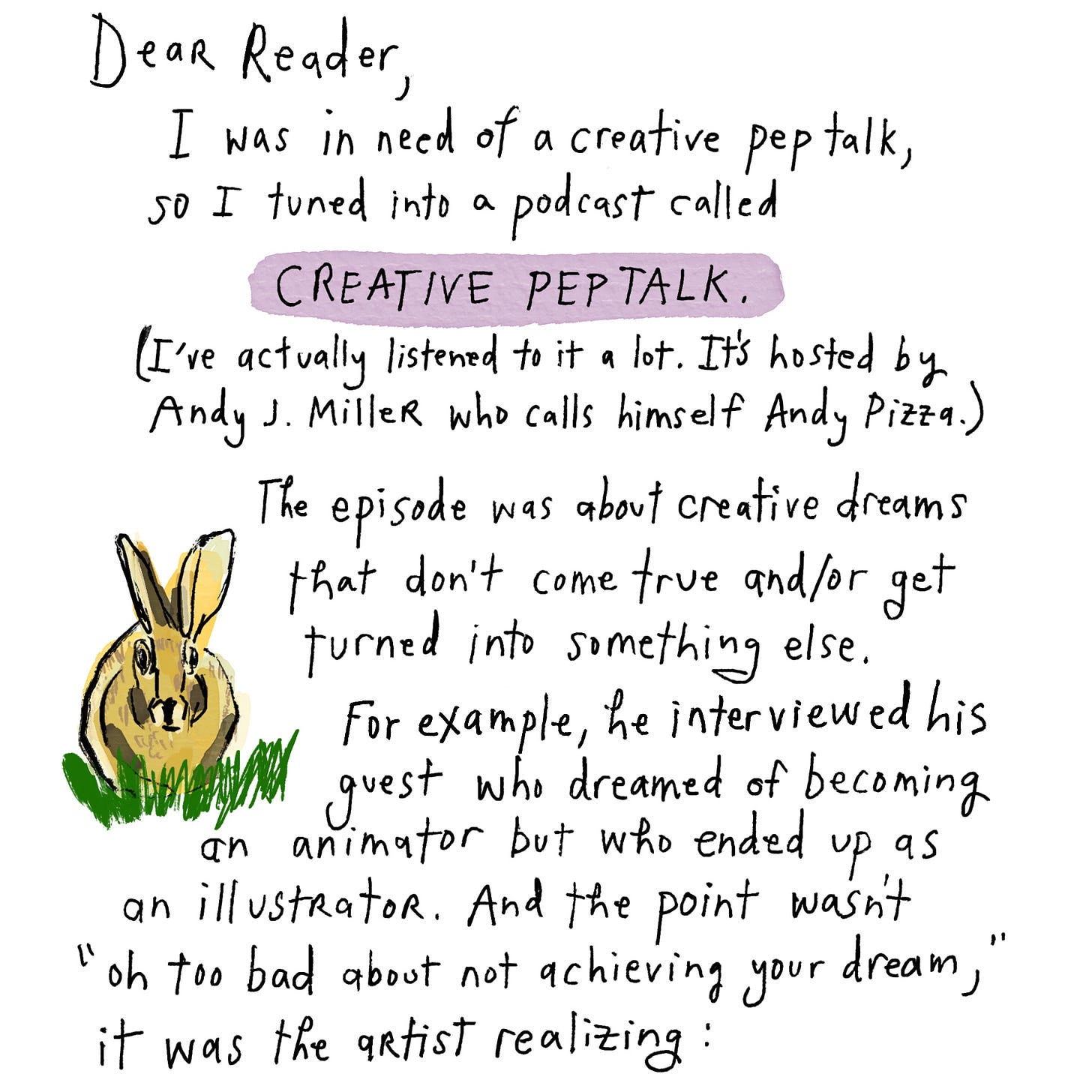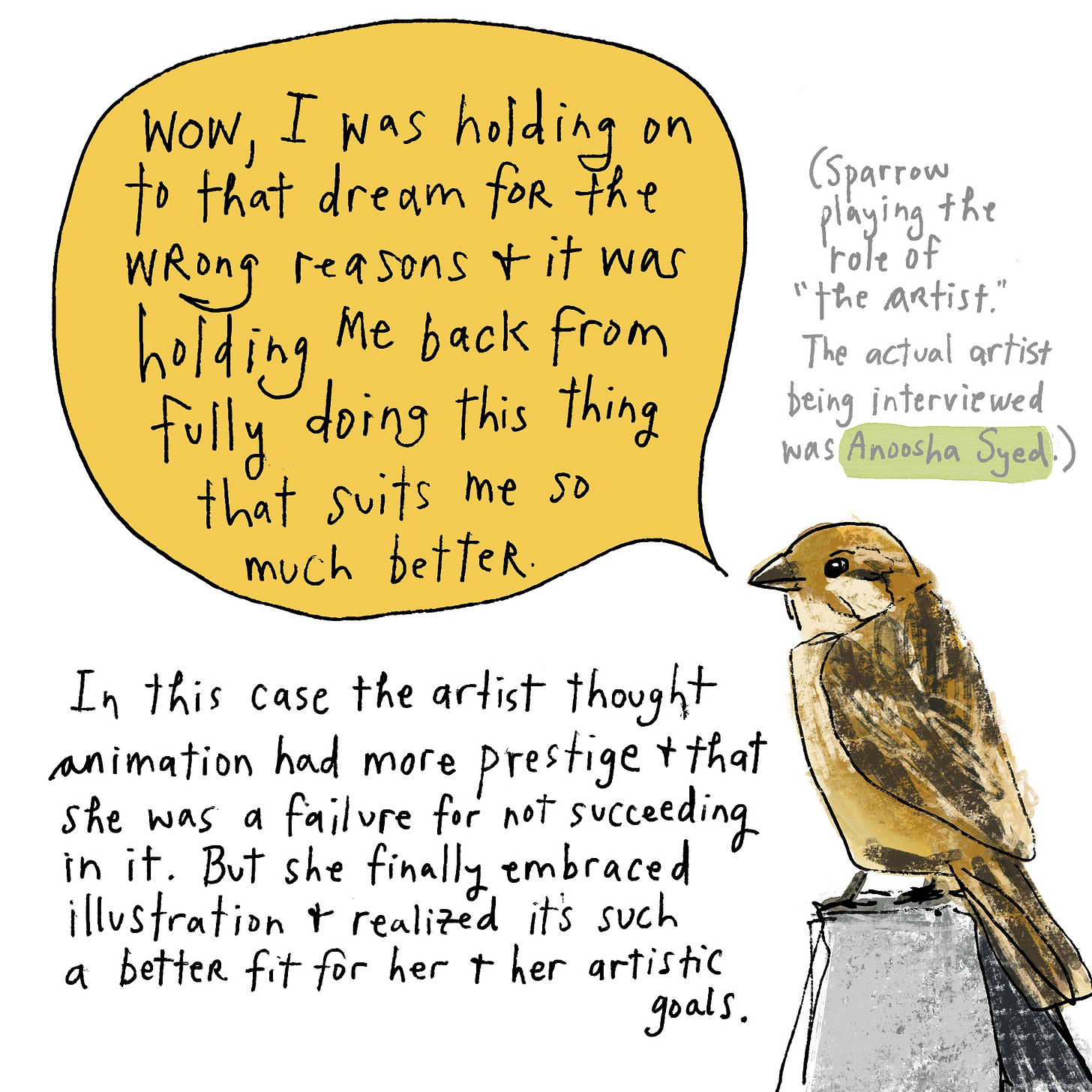Even before I started graduate school more than 20 years ago, I dreamed of publishing a NOVEL. Everyone knows a novel is much more prestigious than a short story collection, which I published in 2011. And much more prestigious than a novella, which I published in 2013. Certainly more than a weird biography that turned into a memoir written in postcards, which I published in 2016. And yes, even more prestigious than a graphic memoir, which I published last year.
On the one hand, I could be the person in the podcast interview triumphantly saying, “YES, I realized I was hanging on to a dream of writing a novel only because I thought it was more prestigious, and when I finally let go of it, I was able to fully immerse myself in nonfiction, comics, and visual storytelling!”
That’s one possible narrative. And there’s a lot of truth to it. When I was in grad school, there was no “creative nonfiction” track and a general disdain for memoirs, so when I became a creative writing professor and began reading, writing, and teaching nonfiction, my writing world cracked open in the best way. Meanwhile, I read Fun Home and Persepolis and was like, WHAT IS THIS COMICS AWESOMENESS? And the next thing I knew I was on a journey to make comics, and that’s pretty much all I’ve created—nonfiction comics—for more than five years now.
But here I am dipping my toes back into a story that’s been on the back-burner and feeling confusion about whether it should be a graphic novel or, you know, a regular novel. I’m referring to the project I mentioned in my last post, inspired by my great-grandmother’s life as a teenaged linen worker making tablecloths and towels for the Titanic in Belfast. When I started it in 2018, I thought it was going to be a graphic nonfiction family quest narrative like Nora Krug’s Belonging, where she tries to uncover whether her family members were Nazis. Then it started morphing more into a graphic novel—my fictional imagining of my great-grandmother’s story. And now I find myself delighting in writing and in the potential of prose in a way I haven’t in a long time—and reimagining it as a novel.
So as I listened to the podcast this week, I realized I probably need to confront: what is behind my desire to turn this project into a novel? Is it:
The pleasure of writing, the potential of prose, and the belief that the novel is the best mode of expression for the story?
The frankly daunting prospect of drawing an entire graphic novel?
The deep-down, long-held, and mostly externally-imposed belief in the superiority of the novel and the sense that I am a failure if I don’t accomplish the primary literary goal I have held for decades?
Oh, or, as I’d totally forgotten and just now remembered, the fact that I conceived of and even wrote a grant for this project way back in like 2010 (years before I started working on it graphically in 2018), and that the original plan was for it to be a novel?
Answer: I DON’T KNOW!
[Link to the Creative Pep Talk podcast episode so you can have your own crisis.]








This is scary to read. Your thoughts (the numbered list specifically) have really touched a nerve. I'm 66 now, just retired, and looking to fulfill my (life-long) goal to be a writer. (My parents refused to pay for a major in that, so I side-tracked into art education, eventually getting my Ph.D. in that--so it did work out. I had a job. i had an income, which is all they cared about.) But now, I have the gift of retirement. Now is the time. But maybe i'm overlooking something. (Hoping this doesn't read like a Hallmark movie.) I'll watch the video. [feeling like I'm being led somewhere] And I agree with Tim (below): the handwritten portion is super-vivid, and so well-supports the text before and after...hm, it's almost musical in its structure--lyrics versus instrumental??
Great read. Some points to think about. Really like the way you changed back and forth between the hand written portion and the typed portion (with drawings.) The hand done part always grabs my attention and focus the most. Thank you.